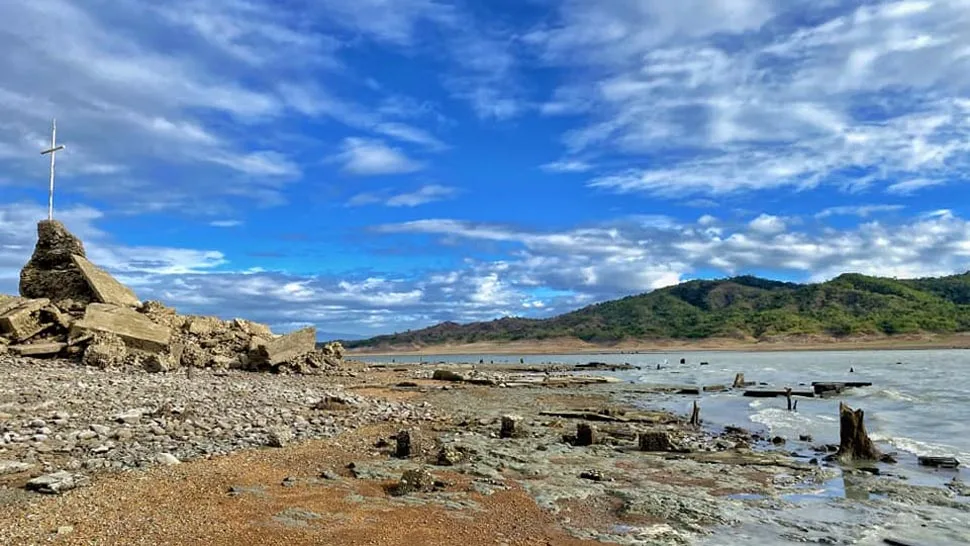Pantabangan town in the Phillippines was submerged in the 1970s to construct a reservoir and only emerges from the water when weather conditions turn extremely dry and hot. This recent event has occurred due to the effect of El Niño. Half of the country is experiencing soaring temperatures and a drought.
In the 1970s Pantabangan’s inhabitants were relocated to make way for the construction of a dam. This dam now functions as the primary source of irrigation and water supply for Nueva Ecija and the surrounding provinces.
However, the centuries-old town of Pantabangan has reappeared at the dried-up dam due to severe drought. Water levels at the Pantabangan dam have fallen by 26 metres this year, with its current level seven metres lower than last year.
The prolonged period of intense heat and minimal rainfall has caused the water levels in the dam to drop, uncovering remnants of a 300-year-old town in Nueva Ecija province. These remains include sections of a submerged church, tombstones, and the foundations of various structures.

Some locals used this as an opportunity to boost tourism. Many fishermen are ferrying tourists to the island to show them the remnants of the town. “Back then, I was only earning 200 pesos [$3.50] from fishing, but when the tourists arrived, I’m earning 1,500 to 1,800 per day,” said fisher Nelson Dellera, reported the Guardian. “When I heard about the sunken church of old Pantabangan town resurfacing, I got excited and wanted to see it,” said 61-year-old retired nurse Aurea Delos Santos.

However, many residents are worried because of the re-emergence of the town. Richard Oredian, Hydrologist with the State Weather Bureau, has attributed this climate change, ” it hasn’t rained in our watershed areas. In addition, the water evaporates quicker due to extreme heat.”
Emisonia Gante, resident of Pantabagan, said. “Although I am happy to see my birthplace, I am sadder because I worry how this could affect our farmers.”